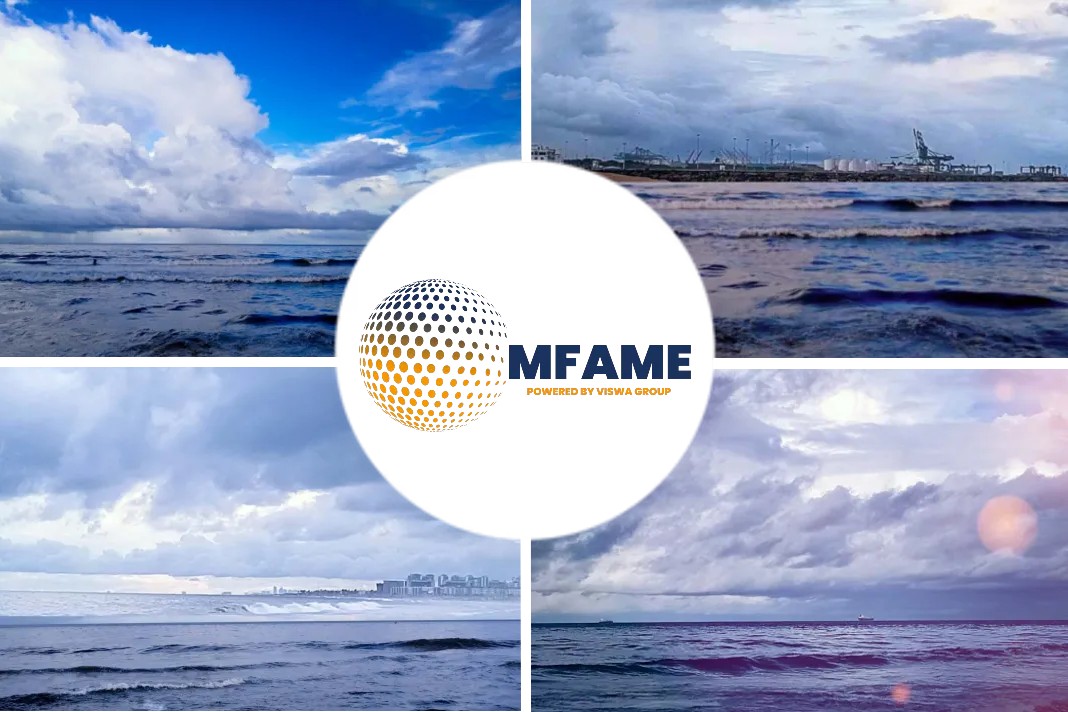Salvage industry is not prepared for an LNG-fuelled ship casualty
Do not let the ship sink, do not spill gas and do not let it catch fire; that was the advice from Smit Salvage master Sylvia Tervoort for owners of gas-fuelled ships. Ms Tervoort was talking about the technical challenges of salvaging ships fuelled by LNG if they became a marine casualty at the International Salvage Union (ISU) conference in London this March. After a couple of years’ research into the risks, she concluded that an LNG-fuelled ship could be salvaged in only two conditions – if it was dry and intact.
There is real concern that salvage operations would be severely hampered by the vapour emitted from LNG fuel. Tugs and electrical equipment could not get close to the casualty while gas is being emitted. There is virtually no experience in salvaging any gas-fuelled ship, even an LNG carrier, because of the sector’s good safety record to date. But there have been some recent incidents that have elevated this concern.
There was an incident involving a tanker striking two gas carriers in the United Arab Emirates in February. The 2000-built, suezmax tanker Jag Laadki ploughed into two gas carriers at the Fujairah anchorage. Jag Laadki struck the 2009-built, 210,100m3 LNG carrier Al Khattiya and continued, side-on, into the 2013-built 38,000m3LPG carrier IGLC Anka. The incident caused no leakage, however.
Ms Tervoort’s research also focused on two LNG-fuelled ferry incidents in Norway over the last two years that needed some assistance.
She said the main risks for salvage contractors comprise the flammable state of gas vapour, the freezing temperatures of liquefied gas and the way this expands dramatically when transitioning to a gas.
“LNG is in a constant state of boil-off and the rate of vaporisation depends on the volume in a tank and the type of tank,” Ms Tervoort said. “LNG is lighter than air, can be up to 99 per cent methane and is hazardous in both its cryogenic state and as natural gas.”
Tanker risk
The low temperature means a leak can cause carbon steel to become brittle and fracture – one reason why oil companies and tanker operators have been reluctant to invest in LNG as a fuel for crude carriers. One spill of LNG could lead to the breakup of a tanker, resulting in a major oil spill.
This has been one of the arguments against LNG fuel from the tanker industry this decade. Contact with cryogenic gas could also cause harm to salvage personnel. However, Ms Tervoort explained that salvors and tug operators are unlikely to want to be close to any stricken ship still leaking liquid and vaporising gas. “A challenge would be sailing close to an LNG-fuelled vessel without knowing the conditions.”
She added: “Is there an LNG leak, a vapour cloud in a collision? It would be all about vapour management, having the right equipment and training personnel. How easy would it be to approach a casualty and what are the safe zones to work in?” Another issue is working in confined spaces on a casualty, as LNG would displace air, which could lead to asphyxiation. And an ignition source could lead to a deadly explosion and flash fires.
Another issue to consider is an underwater release. “There is a rapid phase transition that leads to a wave of rapidly increasing volumes in water,” Ms Tervoort explained. “There could be an imbalance of a vessel because of a sudden gas expansion event.”
Emergency response
The salvage industry has worked with the US Coast Guard and the Society for Gas as a Marine Fuel to draft guidelines for the salvage of LNG-fuelled ships. “Our industry wants to be ahead of events as if there is a significant incident, then salvors need to be prepared,” said Ms Tervoort. “We do not have all the answers yet, so more research is required.”
The research so far has considered responses to an incident involving a ship with intact but damaged C-type tanks, that is still afloat and is partly or completely submerged. Initial conclusions suggested that salvage contractors would need some form of vapour control and would need to ascertain the condition of the casualty.
“In a large spill, a control burn could be beneficial, or dry powder or chemicals could be used to tackle a fire,” Ms Tervoort said. “There could be a flammable cloud in a submerged leak, but no visible pollution. Lightering of LNG fuel could be done, but a controlled release may be more beneficial.” Divers would be needed to check that the casualty was in a safe condition before the salvage operation can begin.
The response to an oil-fuelled ship could involve welding hatches and doorways closed and using electric-powered pumps and air compressors. These operations will seal the hull of a ship before air is pumped in to displace the water and provide buoyancy for refloating a ship.
At the ISU conference, Morgyn Davies, a former senior salvage officer with the UK Ministry of Defence, commented that all these operations offer an ignition source that could lead to an explosion if exposed to gas vapour. He suggested that other methods may be needed to salvage an LNG-fuelled ship.
Ms Tervoort concluded that using current knowledge, a gas-fuelled ship could be salvaged if it was dry and intact, but not if it was wet and damaged. “My advice is don’t let it sink, don’t let it spill and don’t let it catch fire,” she said.
LNG as marine fuel – two types of hazards
Cryogenic liquid:
- Temperature
- Rapid phase transition
- Rollover – vessel imbalance
- Underwater release
Natural gas:
- Asphyxiation
- Flammable
- Explosion
- Delayed ignition
- Pool fire
- Environmental hazard
- Human error
Did you subscribe for our daily newsletter?
It’s Free! Click here to Subscribe!
Source: LNG World Shipping















![[Watch] Crazy Power Needed to Move World’s Largest Containerships](https://mfame.guru/wp-content/uploads/2023/11/mfame-tanker-100x70.jpg)

